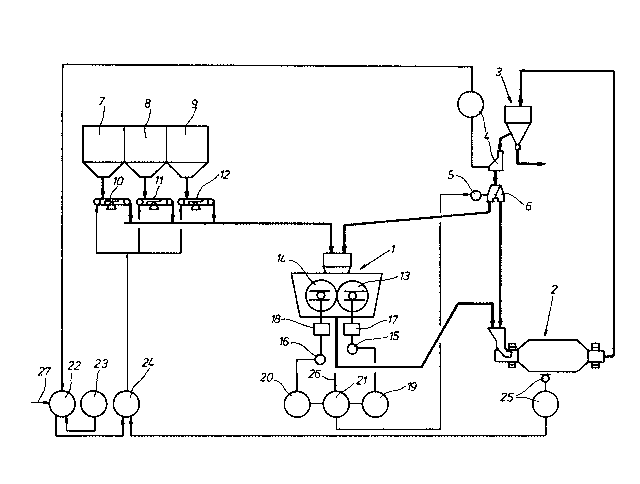Some of the information on this Web page has been provided by external sources. The Government of Canada is not responsible for the accuracy, reliability or currency of the information supplied by external sources. Users wishing to rely upon this information should consult directly with the source of the information. Content provided by external sources is not subject to official languages, privacy and accessibility requirements.
Any discrepancies in the text and image of the Claims and Abstract are due to differing posting times. Text of the Claims and Abstract are posted:
| (12) Patent: | (11) CA 1284976 |
|---|---|
| (21) Application Number: | 1284976 |
| (54) English Title: | METHOD AND APPARATUS FOR THE TWO-STAGE CRUSHING OF BRITTLE MATERIAL FOR GRINDING |
| (54) French Title: | METHODE ET DISPOSITIF DE CONCASSAGE EN DEUX ETAPES POUR MATERIAUX CASSANTS ALLANT AU BROYAGE |
| Status: | Expired and beyond the Period of Reversal |
| (51) International Patent Classification (IPC): |
|
|---|---|
| (72) Inventors : |
|
| (73) Owners : |
|
| (71) Applicants : |
|
| (74) Agent: | MACRAE & CO. |
| (74) Associate agent: | |
| (45) Issued: | 1991-06-18 |
| (22) Filed Date: | 1987-12-01 |
| Availability of licence: | N/A |
| Dedicated to the Public: | N/A |
| (25) Language of filing: | English |
| Patent Cooperation Treaty (PCT): | No |
|---|
| (30) Application Priority Data: | ||||||
|---|---|---|---|---|---|---|
|
Abstract
The invention relates to a method and apparatus for the
two-stage crushing of brittle material for grinding using
a roll mill and a mill connected after it in which a
branch stream of the grit obtained in the sifting
operation is returned to the roll mill and a further
branch stream is returned to the second mill. A first
control circuit keeps the sum of the quantity of fresh
material and the quantity of grit constant, whilst a
second control circuit divides the quantity of grit into
two branch streams in such a way that the drive power of
the roll mill remains constant.
Note: Claims are shown in the official language in which they were submitted.
Note: Descriptions are shown in the official language in which they were submitted.

2024-08-01:As part of the Next Generation Patents (NGP) transition, the Canadian Patents Database (CPD) now contains a more detailed Event History, which replicates the Event Log of our new back-office solution.
Please note that "Inactive:" events refers to events no longer in use in our new back-office solution.
For a clearer understanding of the status of the application/patent presented on this page, the site Disclaimer , as well as the definitions for Patent , Event History , Maintenance Fee and Payment History should be consulted.
| Description | Date |
|---|---|
| Inactive: Adhoc Request Documented | 1994-06-18 |
| Time Limit for Reversal Expired | 1993-12-20 |
| Letter Sent | 1993-06-18 |
| Grant by Issuance | 1991-06-18 |
There is no abandonment history.
Note: Records showing the ownership history in alphabetical order.
| Current Owners on Record |
|---|
| KRUPP POLYSIUS AG |
| Past Owners on Record |
|---|
| FRANZ J. ADRIAN |
| GOTTHARDT BLASCZYK |
| HARDY KROPF |
| HEINZ-GEORG MERSMANN |
| NORBERT PATZELT |